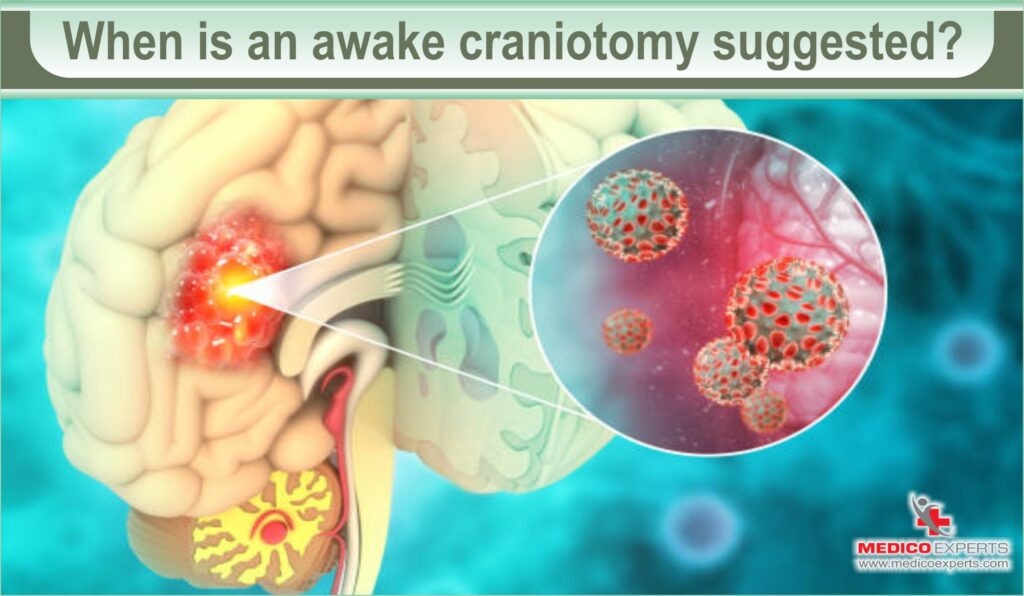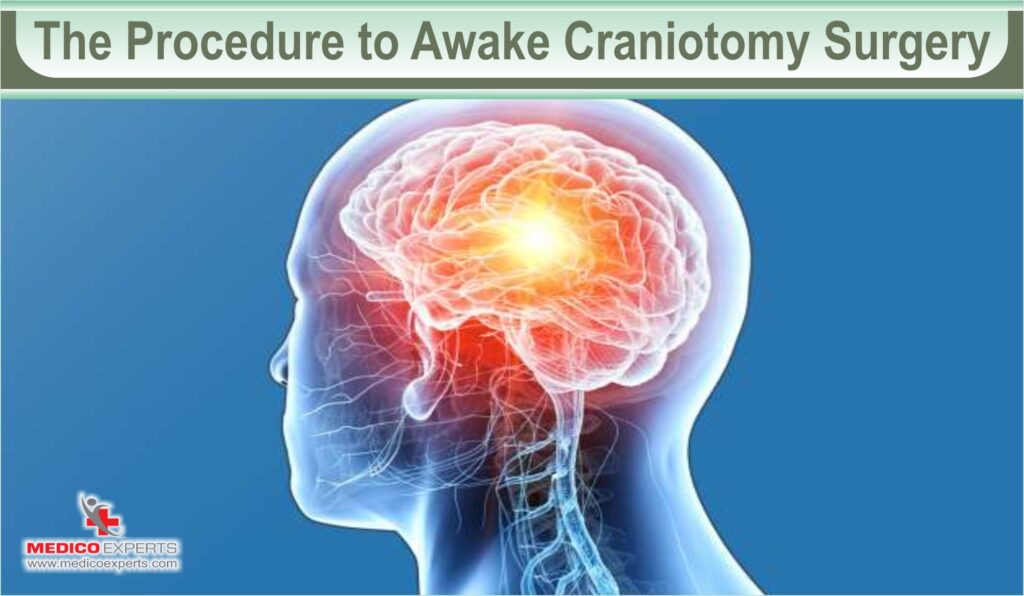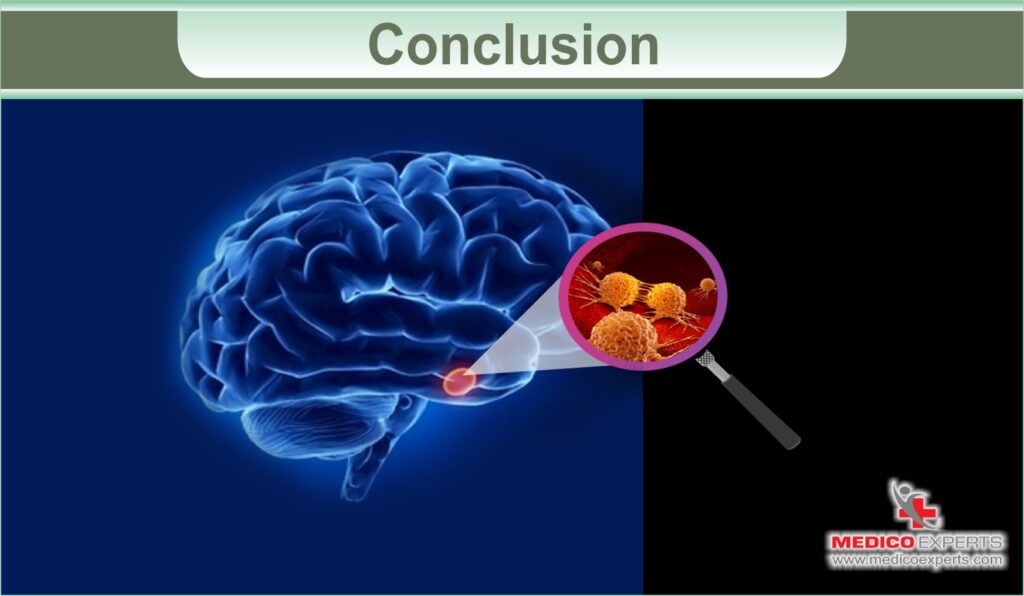Breaking barriers, awake craniotomy redefines the landscape of neurosurgery, proving that limitations are but stepping stones to greater achievements.
The mere thought of brain surgery can provoke a range of emotions – from fear and anxiety to a desire for relief and recovery.
According to recent statistics, brain tumors are diagnosed in over 90,000 people every year, and around 17,200 people lose their lives to malignant brain tumors.
In the era of medical science and patient care advancements, awake craniotomies stand out as an outstanding surgical approach.
Let’s understand the need for awake craniotomy, its benefits and challenges, and most importantly, how it can empower patients to take an active role in their healthcare journey.
Let’s explore this aspect of neurosurgery in detail.
What is Awake Craniotomy?

An awake craniotomy is a specialized neurosurgical procedure where the patient is kept conscious and alert during the operation.
Contrary to traditional surgery patients are completely unconscious under general anesthesia an awake craniotomy allows surgeons to interact with patients in real time while performing the delicate brain surgery.
Having a patient awake during brain surgery allows the surgeon to perform tasks that provide vital feedback to the healthcare team.
This technique is also known as cortical mapping. It ensures surgeons assess the function of different brain areas by stimulating them. This approach allows the surgeon to target maximal tumor removal while reducing potential risks.
While the idea of awake brain surgery may unsettle some people, the surgical team will offer counseling and support to help the patient prepare for the procedure. They will ensure the patient’s comfort throughout the operation.
Awake brain surgery is generally considered an effective and safe surgical approach.
When is an awake craniotomy suggested?

The decision to undergo awake brain surgery will depend on several factors, including the size and location of the tumor, the health of the patient, and their ability to cooperate during surgery.
It could be suggested when the tumor is near areas of your brain controlling speech, movements, or sensations. This includes tumors near the motor cortex in the prefrontal gyrus (Brodmann area 4), the sensory cortex in the postcentral gyrus (Brodmann areas 3,1,2), and areas responsible for language (Broca’s and Wernicke’s areas).
Awake craniotomy is a critical technique for performing deep brain stimulation, especially beneficial in treating Parkinson’s disease, central movement disorders, Alzheimer’s disease, and certain psychiatric conditions.
For patients undergoing pallidotomy and thalamotomy to manage chronic pain, awake craniotomy allows for real-time patient feedback, enhancing the safety and efficacy of these interventions.
What are the potential benefits of awake craniotomy?

Research indicates that awake brain tumor surgery tends to result in improved outcomes such as:
- More comprehensive tumor removal,
- Reduced occurrence of late neurological deficits,
- Shorter durations of hospital stays, and
- Increased survival rates in comparison to surgeries performed under general anesthesia.
These favorable outcomes can only be achieved through intraoperative stimulation mapping on conscious patients, a technique that plays a pivotal role in safeguarding vital neurological functions.
Furthermore, the anesthesiologist plays a significant role in minimizing the adverse effects associated with awake brain tumor surgeries by avoiding specific general endotracheal anesthesia components.
Understanding the Risks of Awake Brain Surgery

While awake craniotomy has revolutionized the approach to treating brain tumors and represents a significant advancement in neurosurgery.
It is important to approach this procedure with an understanding of its associated risks. Like any surgical intervention, awake brain surgery involves certain complications, though the medical community works diligently to minimize these risks.
One notable risk during awake craniotomy is the potential for seizures, primarily during the process of cortical mapping. These occurrences are commonly brief and tend to resolve on their own. In the event of a seizure, surgical teams are prepared to intervene with cold, sterile water or appropriate medications to mitigate the episode promptly.
Other potential risks include:
- Hypertension – An increase in blood pressure during the procedure.
- Nausea or Vomiting – Reactions to the awake surgery process or medications.
- Airway Complications – Challenges in maintaining a clear airway while the patient is conscious.
- Air Embolisms -The rare introduction of air into the bloodstream.
- Failed Awake Craniotomy – Situations where cortical mapping cannot be effectively performed, leading to an incomplete procedure.
Despite these risks, for people with brain tumors, avoiding surgery can result in the tumor’s continuous growth, which may cause irreversible brain damage over time. Thus, while awake craniotomy carries its set of challenges, the benefits of accurately removing brain tumors while preserving vital functions often overpower the potential for complications.
Preparing for Awake Brain Surgery: What to Expect

The path to awake brain surgery involves a series of preparatory steps designed to optimize outcomes and minimize discomfort for the patient.
- Patients can maintain their regular daily routines before surgery, including taking most prescribed medications.
- It is vital to follow medication regimens like steroids, antiepileptics, and antihypertensives unless advised otherwise by the surgical team.
- Before the operation, patients will have thorough consultations with healthcare providers to discuss special medications for a smoother surgical process.
- Dietary guidelines recommend consuming solid foods up to 6 hours before surgery and fluids up to 2 hours before to ensure proper nourishment and preparation.
The focus is on balancing patient nutrition and readiness for surgery to prioritize safety and comfort.
The Procedure to Awake Craniotomy Surgery

During the intricate process of an awake craniotomy, the surgical team prioritizes the comfort and safety of the person undergoing the procedure.
Step 1
The initial steps involve administering mild sedatives through an IV in the individual’s arm ensuring a state of relaxation without inducing full unconsciousness. To keep the patient comfortable and manage fluid output efficiently – a catheter may also be inserted.
Step 2
The next phase includes preparing the skull for surgery.
Surgeons apply local anesthesia to numb the area where they need to access the brain. This is crucial for a pain-free experience, even as the surgeon secures the patient’s head in a clamp to stabilize it throughout the procedure.
Modern image guidance systems display detailed brain scans on a monitor aiding surgeons in precisely locating the tumor before making any incisions. Before resorting to using tools like drills, which may sound intimidating but are painless thanks to anesthesia the surgeon confirms the patient’s comfort and absence of pain.
Step 3
Once the brain is accessible the surgeon conducts cortical mapping – a pivotal part of the surgery. This involves stimulating various brain regions to map functions such as speech, language, and movement.
The patient may be asked to perform specific actions, like moving their toes or engaging in speech, to ensure critical areas are protected.
During this critical stage, as the surgeon removes as much of the tumor as possible, the patient’s active participation provides invaluable feedback.
Step 4
After the tumor is carefully removed the surgeon proceeds to close the initially opened access point on the skull followed by suturing the scalp.
Step 5
The patient is then gently moved to a recovery area.
It’s natural for people to feel fatigued post-operation. It stands as a commitment to the resilience demonstrated throughout this extraordinary procedure, aimed at safeguarding and maintaining critical brain functions.
What is the Recovery Process After Awake Brain Surgery?

In the hours immediately following awake brain surgery, patients are carefully monitored in a post-anesthesia care unit where healthcare professionals closely observe their vital signs, ensuring a stable condition.
- This vigilant monitoring usually lasting no less than two hours, is critical for early detection of any complications.
- Following this initial phase, patients are typically transferred to a high-dependency ward or an intensive care unit (ICU) tailored for more concentrated care.
- During this period patients receive pain management medications as needed to alleviate discomfort and facilitate a smoother recovery. Once the patient is stable and ready to leave the ICU or high-dependency ward, meetings with the medical team are arranged.
- These discussions are pivotal as they provide insights into the surgery outcomes offer a comprehensive diagnosis, and outline subsequent steps or treatments necessary for continued health improvement.
This stage marks a significant milestone in the patient’s journey towards recovery emphasizing the commitment of healthcare professionals to ensure a thorough and empathetic approach to recovery.
How can MedicoExperts assist you?

MedicoExperts is a guiding path for people navigating the complex journey of brain surgery.
By connecting patients with leading specialists in awake craniotomy and providing access to state-of-the-art medical facilities, MedicoExpert ensures that each patient is equipped with the best possible care and information.
Our tailored approach considers each person’s unique medical and emotional needs, ensuring a seamless, supported journey from pre-surgery preparation to post-operative recovery.
With MedicoExperts, patients and their families can find solace in knowing they are not alone, backed by a team committed to their health and well-being every step of the way. Our 24/7 support care contributes to a stress-free experience, allowing patients to focus on their recovery confidently.
So why wait? Contact us today to learn more about how we can empower your journey to healing.
Conclusion

Undergoing awake brain surgery is undoubtedly a formidable and challenging experience, one that requires immense strength and courage from the patient and exceptional skill and precision from the healthcare team.
The successful execution of such complex procedures offers expectancy and a renewed chance at life for many, illuminating the path toward healing and recovery with expertise and compassion.
Don’t hesitate to reach out today and take control of your health.
Q1. What is the success rate of awake craniotomy surgery?
A. Awake craniotomy has shown significant success rates, particularly in minimizing neurological damage while removing brain tumors. At MedicoExpert, we connect you with leading surgeons whose expertise and utilization of advanced surgical techniques contribute to our high success rates.
Q2. How long does recovery take after awake brain surgery?
A. Recovery times can vary depending on the individual’s overall health and the complexity of the surgery. Generally, patients can expect to spend 3 to 5 days in the hospital post-surgery. Full recovery and return to normal activities might take several weeks. MedicoExpert is dedicated to supporting you throughout your recovery process, providing guidance, resources, and rehabilitation services to ensure a smooth and speedy recovery.
Q3. Will I feel pain during awake craniotomy surgery?
A. Patients do not feel pain during the procedure due to the local anesthesia and sedatives administered to ensure comfort. The surgical team, in coordination with MedicoExpert specialists, continually monitors and adjusts sedation levels to ensure you’re comfortable and pain-free throughout the surgery.
Q4. What are the costs associated with awake craniotomy surgery?
A. The costs of awake craniotomy can vary widely based on several factors including the complexity of the procedure, the duration of the hospital stay, and the specific care requirements post-surgery. Typically, the range can vary from INR 2,00,000 to INR 8,00,000 or higher.
Q5. Can MedicoExperts help me with my post-surgery rehabilitation?
A. Absolutely. MedicoExperts understands that recovery doesn’t end with surgery. We provide comprehensive support including access to rehabilitation services, physical therapy, and follow-up consultations to ensure a holistic recovery. Our team will work with you to create a personalized rehabilitation plan targeting your specific needs and recovery goals.
References
https://www.ncbi.nlm.nih.gov/pmc/articles/PMC9338386/
https://www.ncbi.nlm.nih.gov/books/NBK572053/
https://journals.lww.com/jnsa/abstract/2015/10000/the_potential_benefits_of_awake_craniotomy_for.6.aspx



